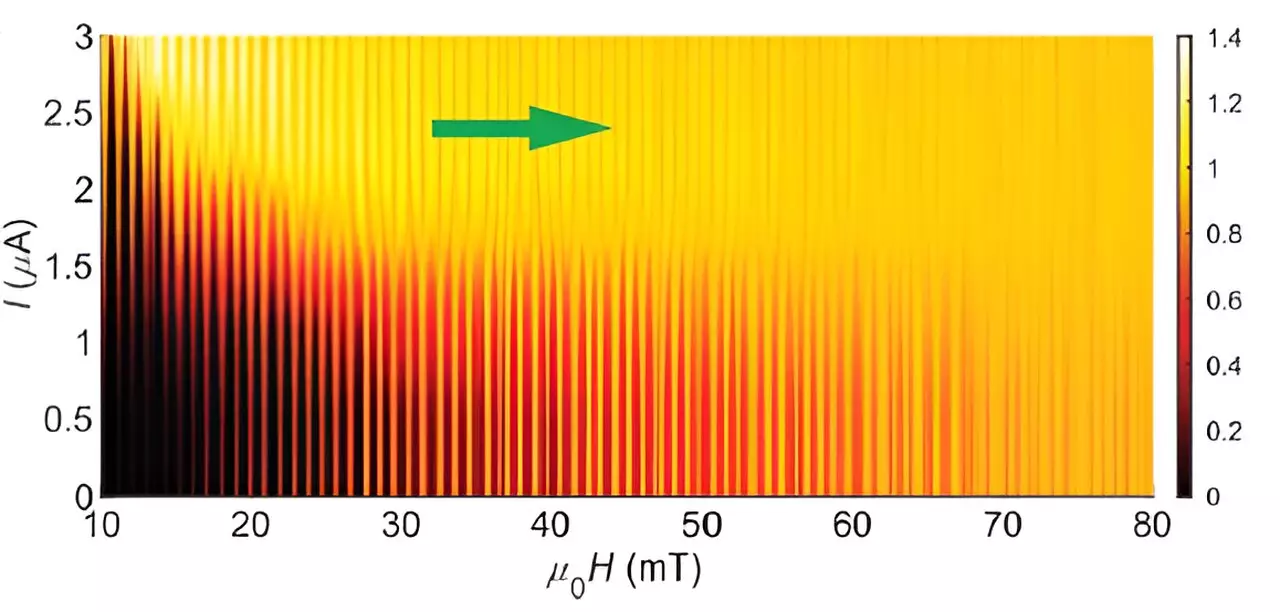Topological materials have emerged as a compelling frontier in condensed matter physics, presenting new avenues for research and potential technological advancements. At the core of these materials lies a fascinating interplay between their unique electronic properties and the underlying mathematical principles of topology. Central to this phenomenon is the concept of the wavefunction, which describes the behavior of electrons within the material. When these wavefunctions become knotted or twisted, remarkable properties emerge at the interface between the topological material and its surrounding space, giving rise to phenomena like edge states.
Edge states represent a dramatic divergence in electron behavior when compared to the bulk of the material. In essence, these states form due to abrupt changes in the wavefunction at the boundaries of topological materials. This situation can be likened to two distinct bodies of water that, despite touching, remain separate in their characteristics. When a topological material is also a superconductor, like molybdenum telluride (MoTe2), both the edge and the bulk can exhibit superconducting behavior, yet their properties diverge in significant ways.
Recent research published in **Nature Physics** has illuminated the behavior of superconducting edge currents within MoTe2. One of the critical findings is that these edge currents can withstand substantial changes in the “glue” that binds electrons together. This glue, or pair potential, is instrumental in allowing for the unimpeded flow of electricity in superconductors. When MoTe2 is subjected to the appropriate conditions, this nuanced behavior at the edges can lead to the establishment of a supercurrent that showcases oscillatory patterns in response to external magnetic fields.
The Role of Anyons in Quantum Computing
One of the more exciting aspects of topological superconductors is the potential they have for quantum computing applications. Theoretical predictions suggest that these materials give rise to exotic particles known as anyons, which behave distinctly from conventional charge-carrying particles such as electrons. Notably, anyons hold onto their positional memory, allowing for intricate arrangements that are not only capable of facilitating quantum operations but also inherently resistant to errors. This characteristic is a game changer in the realm of quantum technologies, where error rates represent significant hurdles.
Furthermore, topological superconductors exhibit unique edge supercurrents, which researchers are eager to harness for the creation and manipulation of anyons. In the context of MoTe2, oscillations in edge supercurrents have demonstrated promising stability, particularly when the conditions favor a strong and compatible pairing potential. The implications of this are monumental, as successful manipulation of these supercurrents and anyons could pave the way for next-generation quantum devices and energy-efficient electronics.
The study of MoTe2 has also revealed intricate details regarding the interplay between its properties and those of other superconducting materials, such as niobium (Nb). When niobium is deposited on MoTe2, it introduces a stronger pair potential. This interplay not only enhances the supercurrent but also highlights a nuanced incompatibility between the pair potentials of Nb and MoTe2. The edge electrons must navigate between these two distinct potentials, leading to observable fluctuations in the supercurrent oscillations.
When the edge pair potential conforms closely to that of the bulk MoTe2, oscillations are smooth and stable. Conversely, discrepancies between the two potentials lead to noisy, chaotic oscillations. This noise can serve as a valuable indicator for researchers to track the interactions between edge electrons and the varying pair potentials, offering insights into the nature of superconductivity within topological materials.
The investigation into the properties of topological superconductors like MoTe2 has illuminated significant aspects of how materials can be engineered for future technologies. By understanding and manipulating edge supercurrents and anyons, researchers are not only advancing our comprehension of these materials but also laying the groundwork for revolutionary devices that leverage their unique properties. As the field continues to evolve, the potential applications in quantum computing and energy-efficient electronics could spell a new era of technological innovation, thus solidifying the relevance of topological materials in modern science.

